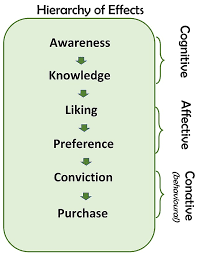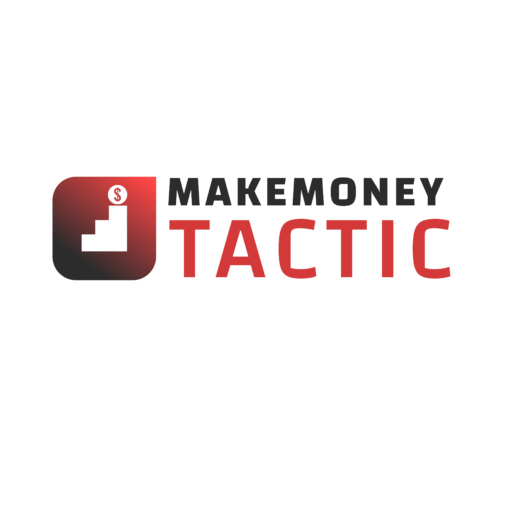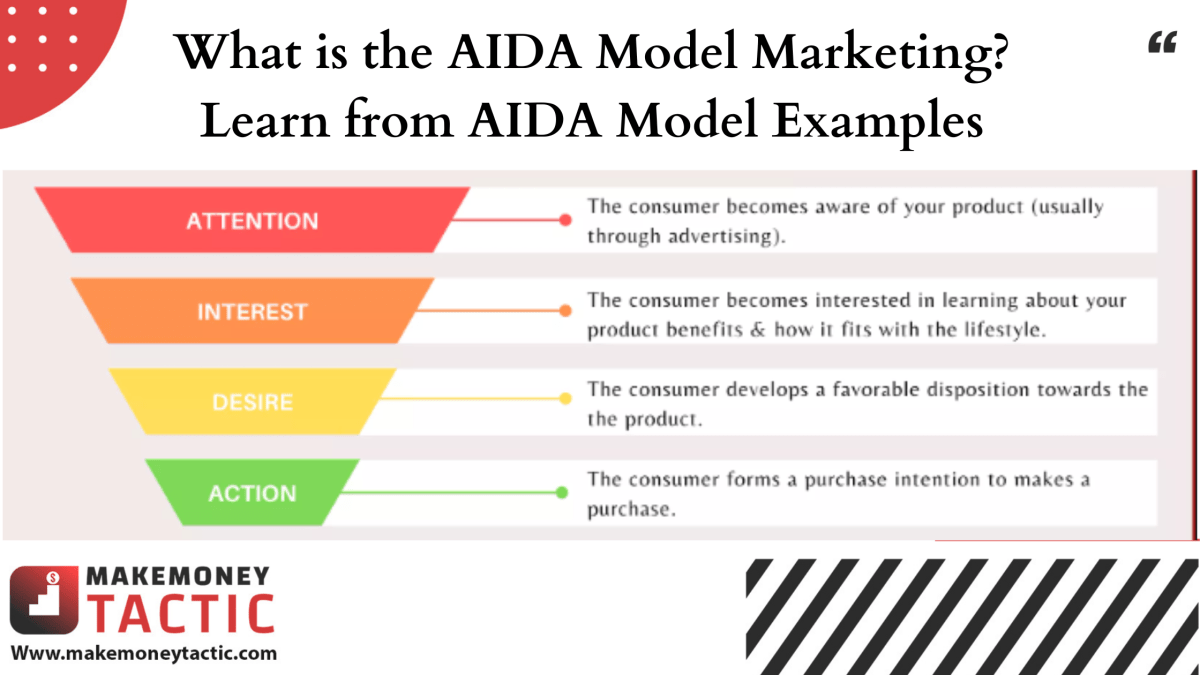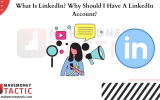AIDA model marketing is often applied in content marketing strategies and demonstrates customer behavior in their buying journey. So what is the AIDA model marketing? How to apply AIDA in content marketing? What are the most popular AIDA model examples. Let’s find out with MakeMoneyTactic!
This article will help you get more information about the AIDA model definition, a brief overview of the marketing funnel and effect hierarchy, development history, 4 factors, how to apply, extended AIDA model, limitations, etc., and examples of how the AIDA model is applied.
What is the AIDA model marketing?
The AIDA model is a classic Marketing model used to design sales and marketing communications strategies.
So what is AIDA? What is the AIDA model?
According to the AIDA model, customers go through four stages before purchasing a product or service.
These steps are reflected through the model’s name ( AIDA ): Attention, Interest, Desire, and Action. In some modern versions, Attention is replaced by Awareness.
These are the 4 factors contribute to the transformation of customer psychology in their buying process.
In these four stages, ideally, your content should draw attention to your brand, create interest in your product or service, stimulate desire, and drive action. Try or buy the product.
With the help of the model, brands can create the right tactics to convey the marketing message to the target audience.
The AIDA communication model shows high effectiveness when using psychological techniques involving cognitive, affective, and behavioral components.
The AIDA model is considered a hierarchical model of effects, which means that the consumer has to move through each stage of the model to complete the desired action.
The structure of the model is similar to the marketing funnel, where customers take desired actions during a certain stage. In addition, at each stage, there are fewer leads left than at the previous stage.
AIDA model marketing: Overview of the effect hierarchy model and the Marketing funnel
⏩Hierarchy of Effects model

The Hierarchy of Effects is a theory that discusses the impact of advertising on consumer decision-making to purchase certain products and brands.
The theory covers a series of stages advertisers should follow, from customer perception to final purchase behavior.
The hierarchy of effects is based on behavioral psychology. The effect hierarchy model consists of three major stages: the cognitive stage, the affective stage, and the behavioral stage.
- Awareness Stage: Awareness, Knowledge
- Affection stage: Like (like), Preference (preferred)
- Behavioral stages: Conviction (belief), Purchase (purchase)
⏩Phễu Marketing (Marketing Funnel)
Phễu Marketing (The Marketing funnel)
A marketing funnel is a model that shows how potential customers go from awareness of your brand to purchasing a good or service. This model involves several stages of customer interaction with the brand.
Companies use marketing funnels to understand customer needs at each stage, optimize marketing efforts, and generate more sales.
The marketing funnel currently consists of 5 stages: Awareness, Interest, Consideration, Intent, Evaluation, and Purchase.
AIDA model marketing: AIDA model development history
The first version of the AIDA model appeared in 1898 when Elias St. Elmo Lewis, an American sales and advertising pioneer, described the formula for successful advertising.
He anonymously mentioned three advertising principles that he found helpful during his career in The Inland Printer, one of the most popular magazines of the nineteenth century.
Elias St. Elmo Lewis said:
“The job of an advertisement is to attract the reader so that they look at the ad and start reading it; then keep them interested so that they will continue reading it;
Then to convince them that they will believe it when they have read it. If an advertisement has these three successful qualities, it is a successful advertisement. “
(“The mission of an advertisement is to attract a reader so that he will look at the ad and start to read it; then to interest him, so that he will continue to read it; then to convince him, so that when he has read it, he will believe it. If an advertisement contains these three qualities of success, it is a successful advertisement.”)
More than a century later, Lewis’ principles still hold true. They are represented by the acronym AIDA and are widely used in the advertising industry.
4 elements in the AIDA model marketing
There are4 elements in the AIDA model marketing which are:
 ⏩A – Attention
⏩A – Attention
Attention is the first step of the AIDA information model. This phase will focus on creating brand awareness.
You must do audience research and generate attention about products and services among the target audience.
Attention factor of the AIDA model
To understand the target customers or potential customers of the business, marketers need to understand the application of Maslow’s hierarchy of needs in marketing.
At the first step of the AIDA customer journey, consumers will ask: “What is it?”
In this phase, you must first reach your readers with your content. This will help communicate the message and build brand awareness effectively.
Attracting potential customers to your business or brand is the first and most crucial step in any marketing or advertising activity.
⏩I – Interest (interest)
Once customers know your brand, product, or service, it’s time to spark their interest. At this stage, you need to show the benefits and unique features of the product and earn the customer’s trust.
Interest factor of the AIDA model
The main purpose of this step is to engage visitors with your content and deliver your marketing message in a way that suits the needs of your target audience.
In this stage, the goal is to get them to think, “I like it.”
To get to this stage, your content must be persuasive and engaging. While the first phase of AIDA is gaining their attention, this is about keeping it steady.
⏩D – Desire (desire)
The next stage of the AIDA model is to turn customer interest into desire. In the Marketing funnel, desire is the stage where you make the visitor think from “I like it” to “I want it.”
Desire element of the AIDA model
In most cases, consumers come to this stage when they compare products or services from different brands.
So the goal in this stage is for you to introduce and explain your products and services’ unique features and benefits to your readers.
You need to show how users will benefit from your products and services.
⏩A – Action
Maybe you have captured the attention of your target customers and made them interested and eager to own your product or service.
But all of the above efforts will be “zero” if the customer does not take action.
So, after the desired success, the next step is for your business to make the audience take action immediately.
The Action element of the AIDA model
If you own an e-commerce website, the next desired stage is to get visitors to buy your products online. (They must click the buy button without scrolling to other products).
This can be achieved through advertisements by offering limited-time offers etc.
CTA (Call To Action) – Calls to action and placing them in the right places will increase conversions.
CTAs can be used in different marketing channels, such as:
- Flyer: CTA could be “Visit the store.”
- Email: CTA could be “Visit website for more details.”
- Landing Page: CTA could be “Order Now.”
Application of the AIDA model marketing
Although the AIDA theory is like that, the real difference is in how each business understands and applies the AIDA model in Marketing.
1- Attention Stage
Main goal: Create attention with customers and increase brand awareness.
Channels used: During the attention phase, the online marketing channels used have the characteristics of being easily accessible to a large number of customers.
Commonly used channels include:
⏩SEO (Search Engine Optimization)
Search engine optimization (SEO) is an extremely popular tool and method today. Once your website is optimized to the top of the search, you can not only reach a large number of customers.
In addition, these customers are “quality” customers because their search results are expected results that “match” their search intent, keywords, and problem.
✅See also: Best Online Course for SEO: Rank #1 in SERPs
⏩Google Ads and Social Media Advertising
Google advertising and social media advertising will allow you to reach a large number of users in a short time. Of course, this is consistent with attracting attention at the early stage of the AIDA model.
✅See also: Does Google Ads Work: Google Ads Step-By-Step
⏩PR Online
You can also reach many customers by appearing in many relevant newspapers. When you build a good PR strategy, it will also support SEO very well in backlinks.
⏩Content Marketing
Content is an essential element of multi-channel use. Because if the website has been to the top, but the title is not attractive and attractive, no matter how good the content you write, it will not receive any clicks.
Content Marketing is the best way to get customers’ attention. Focus on creating informative content to address customers’ problems and concerns and provide solutions.
In addition, how strategizing the right content for each channel is very important. Therefore, the AIDA model in the range has been applied as widely as the AIDA model in advertising and the AIDA model in Marketing.
Content that wants to attract attention must contain strong words and elements that help emphasize and arouse curiosity, such as the “headline” headline.
At the same time, it is necessary to prioritize using visual content (content through images, videos, infographics, etc.) to get high attraction and catch up with trends.
✅See also: 7 Content Marketing Examples that Drive Result in Business
2- Interest Stage (interest)
Main goal: Create interest and excitement for customers. The key is to create a connection between customers and businesses to retain customers.
Channels used: During the AIDA interest generation phase, providing customers with relevant and useful information is what your business needs to do.
The following are the channels used during this phase:
⏩Website
Investing and developing a website with valuable content for customers is very important, especially when you need to retain customers at this stage.
Your website is where you can make a connection with your customers. Developing a website with useful and valuable content for customers is extremely important.
However, if you’ve made an impression and you’re not updating your website with new content, customers will still leave.
✅See also: How to Build a Website with WordPress from Scratch
⏩Google Ads and Social Media Ads
Google advertising and Social media advertising are still effective in maintaining customer interest despite moving into a new phase of the AIDA model.
By constantly promoting customers with valuable content, customers still receive those helpful content from your business.
⏩Email Marketing
Email marketing is a form of using email (email) to bring information about sales, marketing, and product introduction to potential customer groups that businesses are targeting.
Not stopping at interacting and retaining old customers, Email marketing is also an effective advertising tool for products, services, and promotions to potential customers.
✅See also: How to Create an Email Newsletter & Make More Money? Complete Guide
⏩Content Marketing
The role of content is still very important at this stage. Content that delights customers will often be content that responds to customer problems or questions.
The AIDA model in content at this stage will be highly suitable if it revolves around the topic of instructions, answering questions, problems, handling errors, etc.
At this point, there will be no more “headline” headlines to attract attention, but they will be helpful and valuable information.
3- Desire stage (desire)
Main goal: It is necessary to highlight the business’s value to customers. Customers will know that your products and services are what they want to solve their problems and needs.
Channels used: At the Desire stage of the AIDA model, you need to make the most of the power of content to showcase your business’s strengths and competitive advantages.
Here are some of the channels used:
⏩Website
If, at the Interest stage, you have brought valuable information to the Blog section of your website, then at this stage, you need to promote more sales pages.
Besides, you must lead customers from useful and valuable content to sales content.
⏩Email Marketing
With the approach to potential customers through email marketing in the previous stage, at this stage, you can combine with sales content at a certain frequency to reach your customers more.
⏩Social Media
Make full use of social networks because the influence of social networks today is huge. The current opportunity to grow through social networks is undisputed.
The fact that you provide content through social networks will earn you a certain amount of interaction.
⏩Content Marketing
This stage is close to the final stage of the AIDA model. Therefore, the content at this stage must desire to arouse more customers’ needs.
To meet various needs, you must diversify your messages, capture your customer’s problem, and create content that captures that problem. Then you can easily bring the customer to the final stage.
4- Action phase (action)
Main objective is the Conversion of customers through Online Marketing channels.
Channels used:
⏩Website
With a website, you need to arrange the calls to action (CTA) in the most reasonable and convenient locations for customers to maximize the ability to generate conversions.
At the same time, the website needs to update the content of offers or promotions to drive faster action (if any).
⏩Email Marketing
In fact, the long-term benefits of email marketing are huge. Taking care of email marketing and executing calls to action skillfully is a great way to increase sales.
⏩Content Marketing
At this Action stage, the CTA is the most important content. Therefore, you need to use a strong and persuasive style and words to get customers to act immediately.
Extended AIDA Model Marketing
As mentioned earlier, the AIDA model has been refined and expanded over the past 100 years with many other variations, including the role of digital media and post-purchase behavior.
Some of those variations are:
- Basic AIDA model : Attention/Awareness (attention/perception), Interest (interest), Desire (desire), Action (action)
- Effect hierarchy model of Lavidge et al.: Awareness (perception), Knowledge (knowledge), Liking (favorite), Preference (priority), Conviction (belief), Purchase (purchase)
- McGuire’s Model: Presentation, Attention, Comprehension, Yielding, Retention, Behavior
- Modified AIDA Model: Awareness, Interest, Conviction, Desire, Action (purchase or consumption)
- AIDAS Model: Attention, Interest, Desire, Action, Satisfaction
- Model AISDALSLove: Awareness, Interest, Search, Desire, Action, Like/dislike, Share, Love/Hate (Love/Hate)
The above variations contribute to many different sales funnels. However, the basic sequence remains:
Cognition → Affect → Behaviour _ _ _
In addition, you can also refer to AIDA and AISAS models to understand more clearly about customer behavior!
✅See also: Jasper AI Review: Can Jasper AI Replace Your Copywriter?
Limitations of the AIDA model marketing
▶Not taking into account the non-linear buyer journey
The AIDA model does a great job of describing a linear thought process for a purchase decision. However, not all purchasing decisions are linear (in a particular order).
For example, a potential customer may show great interest in your product or service but choose a different solution. They only return to you if the other solution doesn’t meet their needs.
Another exception is when a customer likes a product and buys it even though he hasn’t studied it thoroughly. This is the case where the customer experiences the desire and action stages before both the attention and interest stages.
▶Does not include urgent purchases
In addition to a non-linear journey, a lead can go through multiple stages of AIDA at once – all four stages for an urgent purchase.
For example, when friends and relatives recommend them a product, their behavior is expressed based on trust and leads to an immediate purchase decision.
They may not necessarily go through the 4 stages or go through it quickly without following the prescribed process in your business strategy.
▶Just a small part of a comprehensive business strategy
The AIDA model focuses only on first-time buyers. A growth strategy should focus on bringing in profit sources, not on attracting new customers.
After all, it’s easier to keep old customers and sell them more than it is to get a new one.
Besides, the fact that customers are satisfied with your products and services will bring genuine feedback, which can create a lot of attention and interest, thereby acquiring new customers.
Because the AIDA model does not accommodate this, another customer journey model, such as Flywheel, is more appropriate for a holistic business strategy.
✅See also: Rytr Review: Write Blog Posts in 2 minutes with Rytr AI Writing Tool
Typical AIDA model examples
Here are the most popular AIDA formula examples which everyone know:
⏩AIDA model example 1: COKE
Attention: Coca-Cola drew the audience’s attention from its posters. The posters are black, and the questions are written in red. That campaign attracted many people before they knew anything about the product.
Interest: After getting their attention, it’s essential to get them excited about the product, and the coca-cola team has done a great job of that.
In that campaign, they incorporated the word “ZERO,” and people started to notice, be curious, and be interested in this new product.
Coca Cola uses AIDA model
Desire: Since they were able to develop people’s desire for the product, they also focused on the fact that this new drink contains no sugar. It tastes like any other soft drink. In this way, they stimulated the audience to try it out.
Action: Products are placed everywhere you can shop or hang out. People will find Coca-Cola-branded items in grocery stores, convenience stores, movie theaters, vending machines, etc.
When Coca-Cola combined bulk and availability with low prices, the brand succeeded in creating action, helping Coca-Cola maintain its position as one of the world’s leading carbonated soft drinks brands.
⏩AIDA model example 2: APPLE
Introducing Apple Watch
Attention: Apple took an advertisement and made the brand present while creating curiosity among people. The ads don’t share any product features and use the tagline “the watch is coming.”
APPLE has applied the AIDA model to create attention with the slogan “the watch is coming.”
Interest: Interest in the apple watch was created when Tim Cook introduced the apple watch with the iPhone 6. Their different features, straps, and body styles were explained to guests. row.
Desire: The desire to buy a product that comes with a focus on advertising the watch is geared towards fitness. Along with its fitness features, the look also has features where customers can talk and text through it.
They explain how the watch will benefit them in terms of health monitoring and, at the same time, having multiple functions.
Action: The Actions section is where Apple’s brand image comes in, as the brand very often uses a “pre-order” method after product launches to ensure increased sales.
Any business can follow this same way of AIDA marketing. The concept of “reservation” will boost your sales after the product launch.
⏩AIDA model example 3: ADIDAS
Being one of the famous and long-standing brands doesn’t mean they don’t follow the AIDA model. In innovative ways, Adidas also uses this model in its marketing and advertising strategies.
ADIDAS uses the AIDA model.
Attention: To create awareness of their new product, they partner with celebrities, especially the highest-ranked athletes.
The number of fans following these athletes associated with the Adidas brand was enough to create buzz around the new product and direct them to their website.
Interest: To create interest, the site has words and phrases that are equally curious. Simple phrases like “see possibilities” to test new products work well because it connects the audience to the brand more deeply.
The brand also uses headlines like “save up to 50%” (save up to 50%) and “new” to capture customer interest.
Desire: Celebrities and behind-the-scenes photos of the launch event are some of the things that make many people curious. The exclusivity that the brand represents is what the customer wants.
Action: Selling became simpler for Adidas because of the superior product quality and features combined with promoting the idea of ”to be like your idols, Adidas is the right choice.” your idol, Adidas is the right choice”).
Conclusion regarding AIDA model marketing and AIDA model examples
Now, we discussed what the AIDA model is and How to apply AIDA in content marketing and most popular AIDA model examples. Besides, this article also helps you get more information about the AIDA model, a brief overview of the marketing funnel and effect hierarchy, development history, 4 factors, how to apply, the extended AIDA model, limitations, and more.
Hopefully, the above article will help you get more helpful information about how to apply a meaningful AIDA model effectively in setting up your Marketing strategy and in the process of writing content according to your AIDA model!




